In late 2010, at the EICMA show in Milan, Italy, Triumph pulled the covers off two all-new middleweight adventure tourers, the street-oriented Tiger 800 and off-road-ready Tiger 800 XC, and a few weeks later it hosted a world press launch for both bikes in Barcelona, Spain. Impressed by their torquey in-line triple, sure-footed agility and all-around user-friendliness, the complementary pair shared our Motorcycle of the Year award for 2011. Four years later, Triumph reprised its unveil-in-Italy, launch-in-Spain strategy, introducing the updated and expanded Tiger 800 line at EICMA last November and following it up with a two-day press introduction in Marbella, on Spain’s mountainous southern coast.
Read our 2011 Triumph Tiger 800 and Tiger 800 XC review
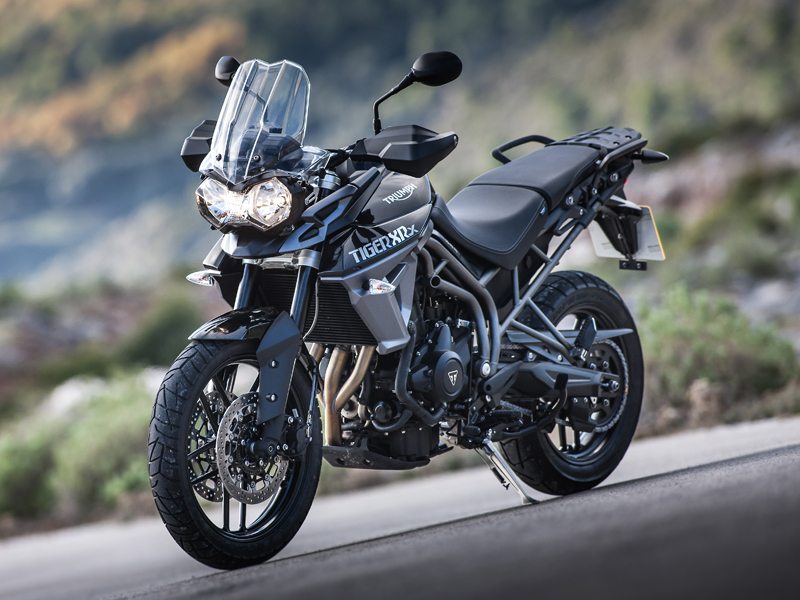
For 2015, the Tiger 800 range has grown to four models, all based on the same platform. The off-road model is still called the Tiger 800 XC, while the street model has been rechristened the Tiger 800 XR. They are joined by two higher-spec “-x” models, the XRx and XCx, which add new “rider focused” technologies such as riding modes and cruise control, as well as other enhancements. During the press launch, we spent a day each riding the XRx and XCx, but the base-model XR and XC were not available.
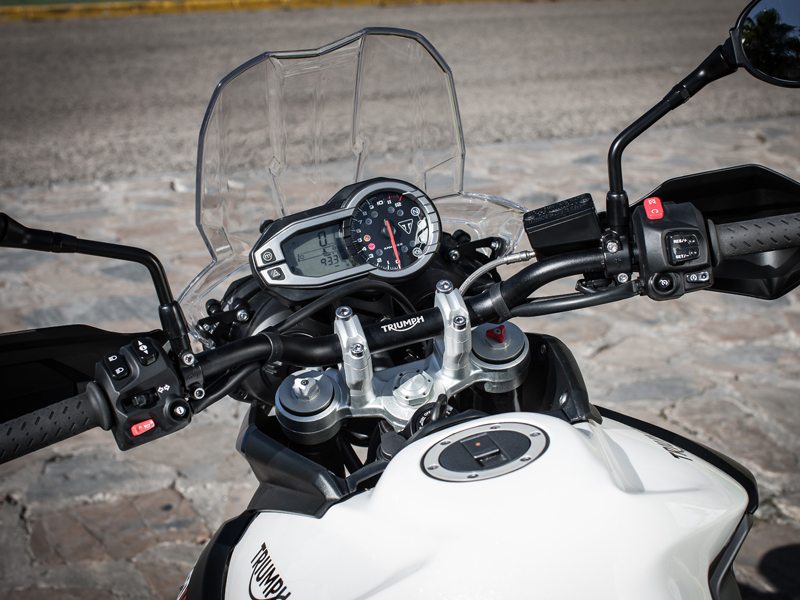
The Tiger 800s share the same liquid-cooled, DOHC, 12-valve, 799cc in-line triple, held in place by a tubular-steel trellis frame and with power sent to the rear wheel through a 6-speed transmission and chain final drive. Originally derived from the Street Triple 675, the engine achieved its larger displacement thanks to a longer stroke, and it was retuned for broad, usable torque. On Jett Tuning’s dyno, our 2011 test bike made 83.9 horsepower at 9,900 rpm and 51.2 lb-ft of torque at 7,700 rpm, with 90 percent of peak torque available from 3,700 to 9,400 rpm. Rather than increase output, for 2015 Triumph focused on refinement, with internal changes to improve combustion efficiency and reduce friction and mechanical noise. A revised airbox, larger radiator, new catalyst and secondary air system help the engine run cooler and cleaner, and a new alternator cranks out 476 watts.

Electronics are what most distinguish the Tiger 800 XR and XC from their XRx and XCx counterparts. A new throttle-by-wire system sharpens throttle response, smoothes power delivery and improves fuel economy (65 mpg claimed, up from 55) across the board, but on the XRx and XCx, it also enables multiple throttle maps and electronic cruise control. Switchable ABS and traction control are standard on all models, with two modes on the XR and XC (On or Off) and three modes on the XRx and XCx (On, Off-Road or Off). Changes to ABS and TC require multi-step navigation through a setup menu, and can be done only when the bike is stopped. The XRx and XCx have riding modes that combine throttle map, ABS and TC settings, and pressing a button on the dash selects “Road,” “Off-Road” or “Rider.” “Road” and “Off-Road” are preset modes, with throttle response, ABS and TC configured for on- or off-road conditions. “Rider” is a programmable mode that allows any ABS or TC setting and one of four throttle maps (Road, Off-Road, Sport and Rain). Full power is available with all maps, but the degree of throttle angle required to achieve a given level of power varies (Sport is snappiest, Rain is softest). The various modes make sense and work well in application, but having to take your left hand off the grip to make on-the-fly changes is clumsy and the icons on the dash are small and hard to read.
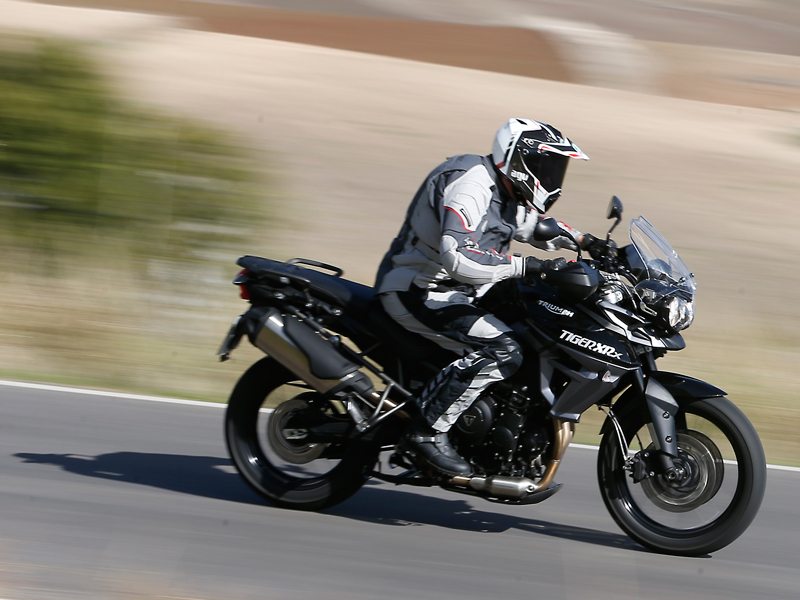
Intended mission determines chassis spec. For street duty, the XR/x models run cast wheels in 19-inch/17-inch (front/rear) sizes, shod with Pirelli Scorpion Trail tires. Suspension is by Showa, with a 43mm, non-adjustable, male-slider fork and a preload-adjustable rear shock, and 7.1/6.7 inches of travel. The off-road-oriented XC/x models have spoked wheels in 21-inch/17-inch sizes with Bridgestone Battle Wing tires and innertubes. Their suspension is made by WP, with a 43mm male-slider fork that’s adjustable for rebound and compression and a remote-reservoir rear shock that’s adjustable for preload and rebound. Longer suspension travel (8.7/8.5 inches) helps the XC/x contend with rougher terrain, but, along with the larger-diameter front wheel, also means a taller seat height (dual-height seats are 31.9/32.7 inches on the XR/x and 33.1/33.9 inches on the XC/x). Nissin brakes are the same on all models, with dual 308mm floating front discs squeezed by 2-piston calipers (and new insulated pads) and a single 255mm rear disc squeezed by a 1-piston caliper.
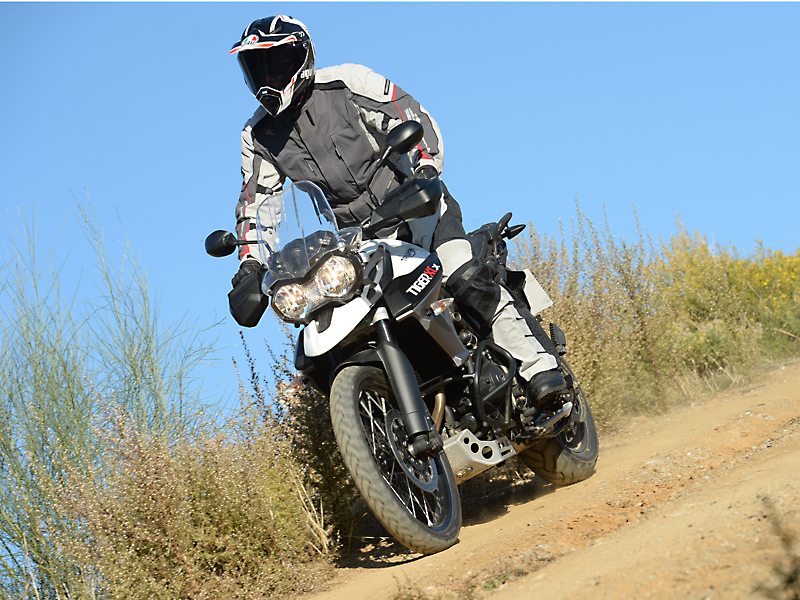
The first-generation Tiger 800s were remarkably easy to ride, with perky yet manageable power, good balance and handling, and comfortable ergonomics. These attributes carry over to the XRx and XCx, with added refinement, versatility and safety. We logged about 130 miles on each model, plus a short off-road stint on the XCx. The Tigers are accessible bikes with no rough edges, ready for any type of riding or terrain. The updated triple has great character and sound, but it revs up quicker and has lighter throttle action with crisp response that is never abrupt or vague. New transmission internals make gear changes more smooth and precise, as if all six cogs were wrapped in velvet, and clutch action is spot on. Feel at the brake lever is a little numb, but the binders offer decent power with a firm pull. Suspension compliance is good on both models, but the XRx is softer with a lot of fork dive under braking (the only adjustment is rear preload). The XCx offers better ride quality and more adjustability (all models would benefit from a remote preload adjuster for the rear shock).
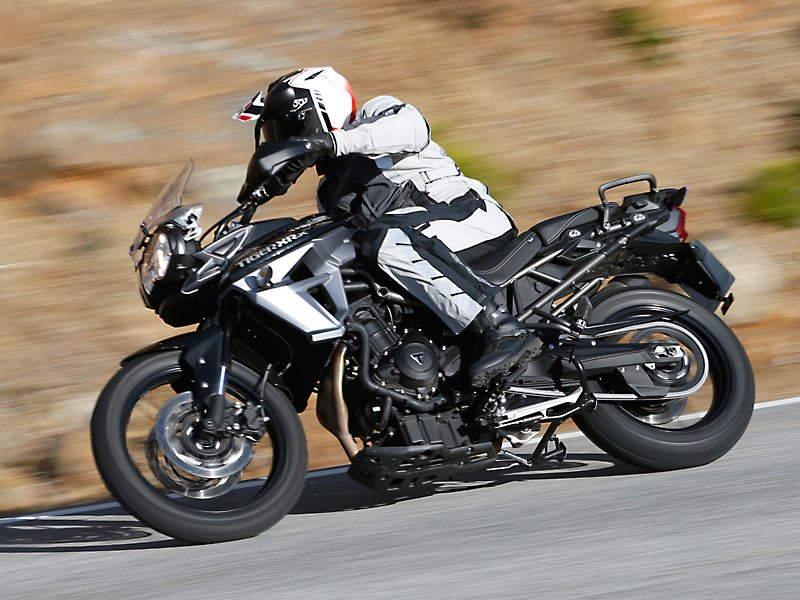
Triumph improved rider comfort by moving the handlebar up and forward, to varying degrees, on the XR/x and XC/x, and adjustable risers allow handlebar position to be moved fore/aft by nearly an inch. The riding position was agreeable on both the XRx and XCx, with the taller XCx allowing more room for my tall frame, and its higher, wider handlebar is better for stand-up riding. The horse saddle-shaped seat was comfortable but locked me in position, and the small windscreen provided modest wind protection but no adjustability.
Triumph refreshed the Tiger’s styling, with more rugged-looking radiator ducts that better direct engine heat around the rider, new tank shrouds, heel guards and exhaust heat shield, and new finishes for the frame, engine and handlebar. Three colors are available: Crystal White, Phantom Black or—exclusive to the XRx and XCx—Caspian Blue. In addition to the added electronics on the “-x” models, they have more advanced trip computers, self-cancelling turn signals and useful accessories fitted as standard, such as hand guards, centerstands and an extra 12V socket. The XRx also has 3D comfort rider and passenger seats, whereas the XCx has engine protection bars and an aluminum skid plate. Many Tiger 800 accessories will be available, including new Givi-made aluminum panniers and top box, heated grips, soft luggage and more.
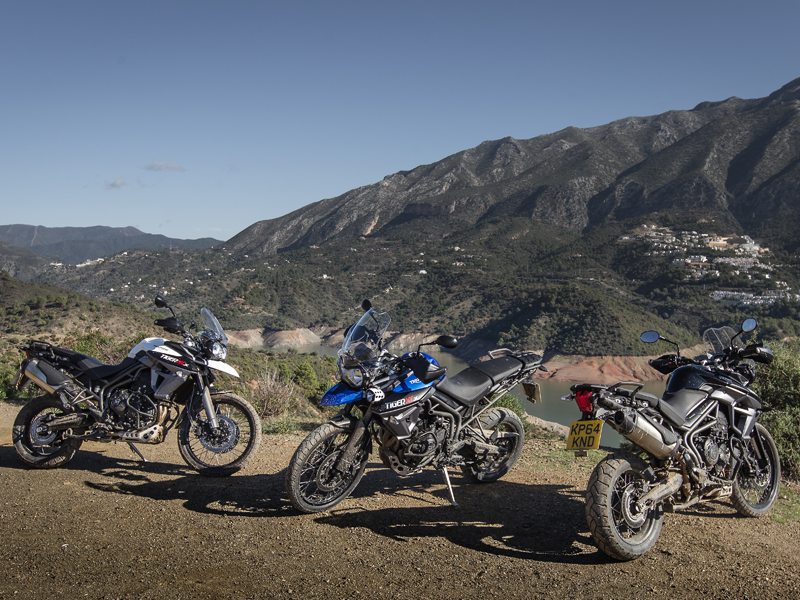
The expanded, refined Tiger 800 line offers a range of choices for middleweight adventure touring, from the standard, street-focused Tiger 800 XR ($11,399) to the electronics-laden, dirt-ready Tiger 800 XCx ($13,499). Having ridden both bikes, primarily on the street and on some of the same roads, my preference leans toward the Tiger 800 XCx. The taller XCx fits me better than the XRx, and its WP suspension is superior and offers more adjustment. Since I enjoy riding off-road, the Off-Road modes for ABS, TC and throttle response are attractive, as are the larger front wheel and spoked rims (though tube-type tires make flat repair a headache). The XRx has a more comfortable seat that’s lower, better tires and costs $1,000 less, and if you don’t want the x-model extras, the base-model XR is even cheaper.
2015 Triumph Tiger 800 XRx (XCx) Specifications
Website: triumphmotorcycles.com
Base Price: $12,499 ($13,499)
Engine Type: Liquid-cooled, transverse in-line triple, DOHC, 4 valves per cyl.
Displacement: 799cc
Bore x Stroke: 74.0 x 61.9mm
Transmission: 6-speed, cable-actuated wet clutch
Final Drive: O-ring chain
Wheelbase: 60.2 in. (60.8 in.)
Rake/Trail: 23.9 degrees/3.6 in. (24.3 degrees/3.8 in.)
Seat Height: 31.9/32.7 in. (33.1/33.9 in.)
Claimed Wet Weight: 476 lbs. (487 lbs.)
Fuel Capacity: 5.0 gals.
MPG: NA

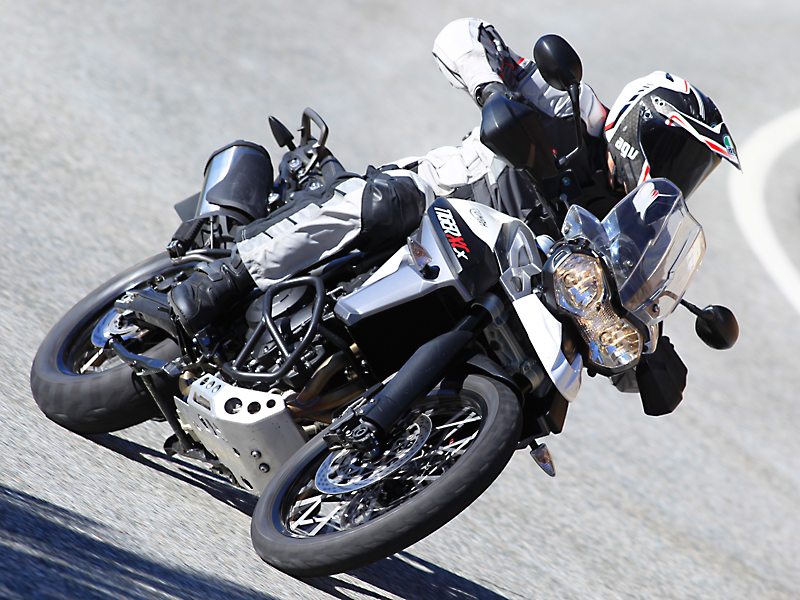







Absolutely LOVE my army green 2013 Tiger 800 XC, so I’m happy to see Triumph only improve, not rework a great bike. Wish I could just slap those XCX electronics on my XC. 😉
Just sold my 1200GS to buy the new Tiger 800 XCx
Looking to buy a new bike but have always had road only.
I’m wondering if the Triumph 800XRx will allow me to acces off road tracks but not hard core as they don’t interest me much.
I just want on road with a reasonable off road capability.
Would appreciate hearing back quite soon as I want to make a decision soon
Many hanks
Simon
Yes, the Triumph Tiger 800 XRx is a great all-around street bike with a 19-inch front wheel, durable chassis and enough suspension travel to handle light off-roading. Solid choice.
I tried to know the width of the XRx or XCx (withwithout the mirrors). I never saw n such data. And, in addition no one reviewer’s said anything about city usage with lane splitting. Is it possible to use these bike as a commuter bike in a city?
I have now not so narrow F800R (905mm width) primary for the city, but is lacks some light off-road capability. I search something suitable.
Hi! I live in Mumbai, India and bought my first big motorcycle, a Triumph Tiger XR. Terrific experience on all fronts except the engine heat. India is a warm / hot weather country and the engine heat is a complete mood spoiler especially when one is waiting at a traffic signal for lights to turn green. And, with huge traffic in India, one encounters many traffic signals in city ride. I checked with the Triumph owners whatsapp group and they too agreed that the engine heat is a botheration. Temperatures in India are usually around 35-40 C (95-104 F) at most times of the year – it goes higher in summers! My thigh feels roasted in a short ride. Is there a way I can overcome this? Thank you, Sumeet